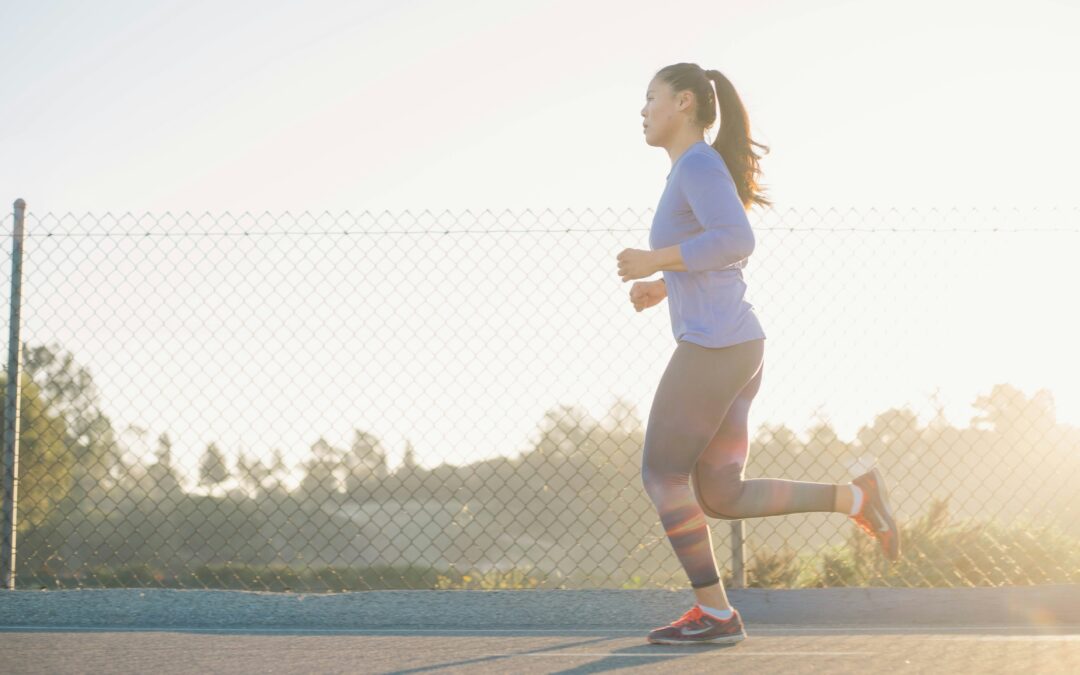What is Running?
Running is a locomotor activity similar to, but more demanding than walking. Just like walking, running
consists of periods of stance when a foot is on the ground and swing when a foot is in the air. The
characteristic that defines running are periods of “float” in which neither foot is in contact with the
ground.
Running can be broken down to the shortest repeatable task, which is described as the running gait
cycle. The phases of the running gait cycle are stance, initial double float, swing, and terminal double
float. The double float phases are the times when both feet are off of the ground. This differs from
walking gait, which always has 1 or more feet on the ground at a time
How can we analyze running?
Running is one of the most popular fitness activities and sports in the world. Surveys suggest around 50
million people participate in jogging or running in the US alone. The higher impact forces during running
compared to walking leads to higher risk of injury. This injury risk magnifies the need for proper running
mechanics and drives the need for research and clinical analysis of running.
We can use a variety of instrumentation to measure key aspects of the running gait cycle. 3D camera-
based systems can be used to quantify joint motion and when coupled with force plates can provide
joint kinetics. 2D camera systems can be used with specific software to analyze single plane joint
motion. Pressure mats and insoles can be used to measure temporal spatial and center of pressure
metrics. IMUs are used to analyze a variety of metrics during running.
What are the difficulties of analyzing running?
One of the biggest difficulties in analyzing running is space. Much like walking gait analysis, running gait
analysis typically takes place during steady state running. While it only takes about 1 meter to go from a
standstill to steady state walking, it takes a longer distance to get up to steady state running. Often
times, lab spaces with the proper instrumentation do not have enough space for acceleration, steady
state, and deceleration. One way to combat this is to use a treadmill, along with other instrumentation
to analyze running. While treadmills offer the ability to capture high sample sizes in a small capture
volume, it is important to understand that there are biomechanical differences between overground
running and treadmill running. If you want to analyze overground running, it might be important to have
a system that can be taken into a larger space in order to get steady state running.
Can the Zeno Walkway be used to analyze running?
The Zeno Walkway system is a pressure sensitive walkway that allows you to measure temporal spatial
running characteristics like speed, stride length, stance time and swing time. Additionally pressure
metrics such as loading symmetry and center of pressure motion can be quantified. Work from
Jorgensen et al. (2024) from the University of Nebraska Medical Center shows that the Zeno Walkway
system is a reliable measurement tool for running analysis in a young, active population. This work
suggests that 3 passes along a 20’ walkway produces reliable temporal spatial running results.
Jorgensen A, McManigal M, Post A, Werner D, Wichman C, Tao M, Wellsandt E. Reliability of
an Instrumented Pressure Walkway for Measuring Walking and Running Characteristics in
Young, Athletic Individuals. Int J Sports Phys Ther. 2024 Apr 1;19(4):429-439. doi:
10.26603/001c.94606. PMID: 38576831; PMCID: PMC10987304.
